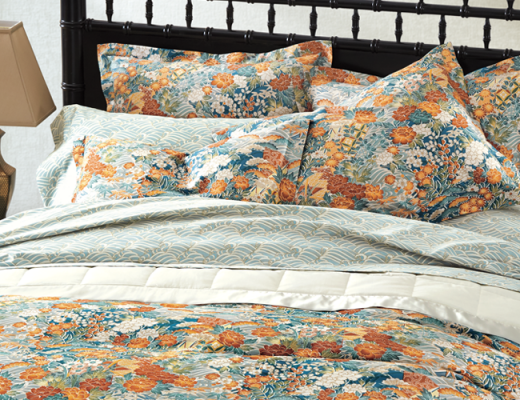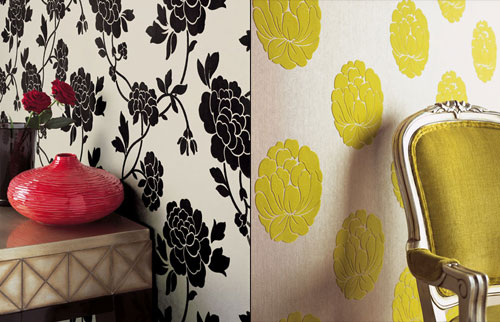Flax, flax, fabulous flax! Did you know that flax is one of the oldest farmed plants in history? Not only isit ancient – being traced back as far as the 4th millennium BC – it also has a wide variety of uses. According to Wikipedia:
Flax is grown both for its seeds and for its fibers. Various parts of the plant have been used to make fabric, dye, paper, medicines, fishing nets, hair gels, and soap. Flax seed is the source of linseed oil, which has uses as an edible oil, as a nutritional supplement and as an ingredient in many wood finishing products. It is also grown as an ornamental plant in gardens.
But perhaps our favorite use of flax is to make linen! Linen itself has a long and royal history, used to wrap and preserve the mummies of ancient Egyptian Pharaohs, being considered a symbol of purity. Yahoo’s Encylopedia provides a condensed look at linen’s history:
Linens more than 3,500 years old have been recovered from Egyptian tombs. Phoenician traders marketed linen in Mediterranean ports. Worn by Egyptian, Greek, and Jewish priests as a symbol of purity, it also typified luxury as in the phrase “purple and fine linen.” Flax was cultivated by the Romans and introduced by them into N Europe. The production of linen was encouraged by Charlemagne, and linen became the principal European textile of the Middle Ages. Flanders has been renowned from the 11th cent. for its creamy flax and fine thread. French Huguenots excelled in working flax and carried the art abroad, notably to Ireland, where Louis Crommelin established (c.1699) a manufactory at Lisburn, near Belfast. Ireland is still the largest producer of fine linen, with Belgium, Japan, and Russia producing somewhat lesser amounts. The first flax-spinning mill was opened in England in 1787, but only in 1812 was linen successfully woven with power looms.
Linen has also been used in currency in ancient times, and to some extent, continues to be used today – US currency is actually comprised of a cotton/linen blend!
It’s kind of amazing that we are still using a material that was used thousands and thousands of years ago. It must be some pretty special stuff then, eh? Indeed, there are several benefits to using linen:
Many fabrics are not breathable, but linen possesses high air permeability and heat. The heat conductivity of linen is 5 times higher than wool and 19 times than silk. This means in hot weather, people dressed in linen clothing are found to have a lower skin temperature than others wearing silk or cotton garments. One more thing, interesting about linen – according to some studies, a person wearing linen clothes perspires 1.5 times less than when dressed in cotton clothes, and twice less than when dressed in viscose clothes. Meanwhile, in cold weather, linen works in reverse, proving ideal for retaining warmth.
Which is why our Italian Linen is one of our best selling bedding products. Offered in both plain hem and triple hem styles, our Italian Linen is medium weight, sturdy, softens with every wash, and temperature regulating. Best of all, right now, it’s on SALE.
Not sure linen’s right for you? Check out our guide on how to choose the perfect sheeting, the first step to getting a great night’s sleep.






No Comments